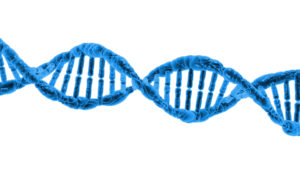It is not uncommon to hear about various mutations that occur in different ways in many people. Despite this, there are still several types that are not widely known by the general public and can be worrying for some when they find out their child might have one.
Mosaicism is one of these not-so-famous genetic conditions, but it actually occurs more often than many people think. It is a condition in which an individual receives two sets of genetic material within the same zygote, resulting in a sort of gene mosaic, hence the name.
But how does this mutation occur? Is it the same for everyone who has it? What are the consequences that mosaicism brings to a person’s life? What characterizes this mutation? Are there health risks? With all these questions in mind, we decided to explain in detail about all aspects of mosaicism in today’s article.
How Does Mosaicism Develop?
Mosaicism develops while still in the womb, when the number of chromosomes in a certain cell is changed. In genetics, this phenomenon is called mosaic. It happens more frequently in reproductive cells, but can occur in any other cell in the human body. There are different types of mosaicism, and they are defined according to which cell in the body has been altered.
Types of Mosaicism
There are basically two types of mosaicism: germline and somatic. As previously mentioned, the type depends on which of the person’s cells had their chromosome number affected.
Let’s talk in more depth about each type so that all the differences between the two become clear. We will also discuss mixed mosaicism, which is not exactly a separate type, but a combination of the two main types.
Germline Mosaicism
This type of mosaicism happens when the change occurs only in gamete cells, in other words, only in reproductive cells. A person with this type of mosaicism does not show any characteristics of the mutation, since only their reproductive cells have this alteration.
However, it is quite possible that, if this person has children, they may be born with a condition resulting from the mutation in one parent’s reproductive cells. Nevertheless, it is very difficult to calculate the percentage risk of this happening and whether it may happen with one or all children, as this can vary greatly depending on each case.
Somatic Mosaicism
This is the type of mosaicism that affects any cell that is not reproductive. With this type of manifestation of the condition, symptoms of mosaicism may or may not appear, meaning there is a chance it will be asymptomatic. When symptoms do appear, they relate to the area of the body in which the cellular mutation took place.
The development of various types of cancer can result from somatic mosaicism, since cancer is essentially the uncontrolled reproduction of cells in a given tissue.
When someone has this type of mosaicism, abnormally reproducing mutant cells may end up killing healthy cells, putting the person’s health at serious risk.
Mixed Mosaicism
This type occurs when a person has both germline and somatic mosaicism at the same time. The features are the same as the two other types, meaning a person may exhibit symptoms in the affected part of the body and have their reproductive cells impacted by the condition.
Risks of Mosaicism
In addition to the risk of developing cancer, as already mentioned above, mosaicism brings other health risks for those with this type of mutation. For example, when a woman is pregnant, the chances of having a miscarriage or of the fetus having a malformation are greater.
Furthermore, mosaicism may also cause growth problems, various types of syndromes such as Turner syndrome, Down syndrome, McCune-Albright syndrome, Proteus syndrome, Pallister-Killian syndrome, among other effects that can pose health risks for the person affected by this type of mutation.
Prevention of mosaicism is based on evaluating family history, since it is a genetic disease. Even so, it is not possible to know exactly whether the child to be born will have this mutation or in which part of the body it will appear.
The good news is that studies on this mutation have made significant progress, and perhaps in the near future, it won’t be such a big problem anymore.
It is always important to understand every aspect involved with any type of mutation, as it is something that can be a part of anyone’s life. But, as mentioned before, there are different types and degrees of mosaicism.
With this, the risks change, as does how each person needs to deal with this condition. Despite all the risks, it is possible to live a pleasant and peaceful life, even if extra care is needed to avoid major problems.
Having a health professional continuously monitor this condition is necessary and helps a lot as you learn to cope with mosaicism.
Also See: Tourette Syndrome – Symptoms and Treatments
Photo: Виталий Смолыгин












